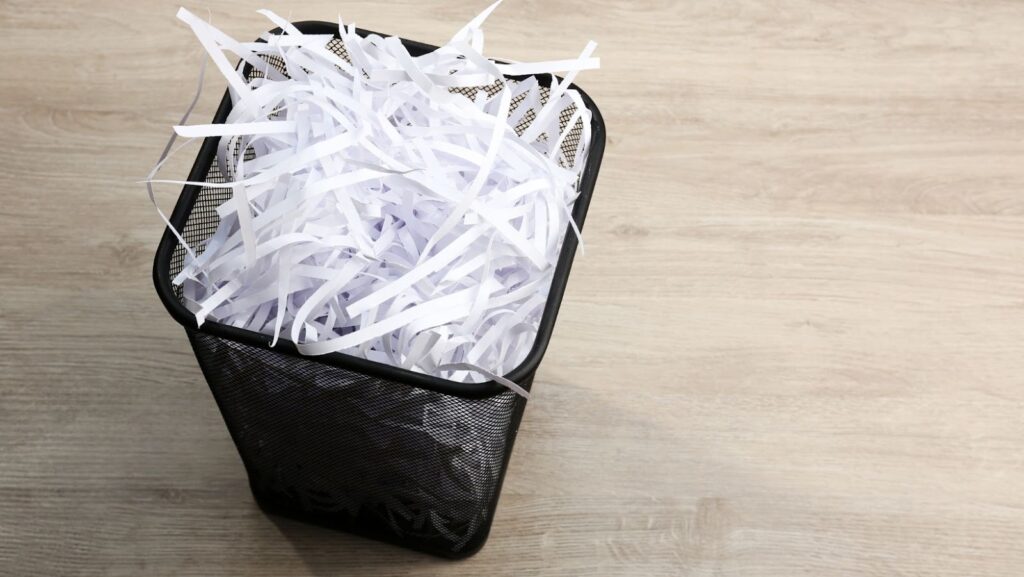Classified Information Can be Destroyed Using
When it comes to the security of classified information, ensuring its destruction is a critical step. Fortunately, there are various methods available that can effectively destroy classified information. In this article, I’ll explore some of the techniques and technologies that can be used for this purpose.
One common method for destroying classified information is through shredding. By using high-security shredders specifically designed for sensitive documents, classified materials can be reduced to tiny confetti-like pieces that are virtually impossible to reconstruct. Shredding offers a reliable and efficient way to obliterate physical copies of classified information.
Methods for Destroying Classified Information
When it comes to safeguarding classified information, ensuring its proper destruction is of paramount importance. There are several reliable methods that can be employed to effectively destroy sensitive documents and materials. In this section, we will explore three commonly used techniques: shredding, burning, and pulping.
Shredding is a widely recognized method for destroying classified information. By reducing documents into tiny confetti-like pieces, shredders render them virtually impossible to reassemble. Government agencies, businesses, and individuals alike rely on this technique to maintain the confidentiality of sensitive data. Shredders come in various sizes and capacities, ranging from small office models to heavy-duty industrial machines capable of processing large volumes of paper efficiently.
Another effective method for destroying classified information is burning. Incineration provides a secure means of complete destruction by subjecting documents or materials to high temperatures until they are reduced to ashes. This method offers the advantage of leaving no traceable remains behind once the process is complete. However, it requires specialized equipment such as incinerators or furnaces designed specifically for this purpose.
Pulping is another viable option for disposing of classified information securely. This technique involves breaking down paper-based documents by soaking them in water until they become a thick pulp consistency. The resulting mixture can then be processed further through mechanical means or chemical agents to ensure complete disintegration. Pulping is often used in conjunction with recycling efforts since the resulting slurry can be transformed into new paper products after undergoing additional refining processes.
It’s important to note that while these methods provide effective ways to destroy classified information, organizations must adhere to established protocols and regulations when disposing of sensitive materials responsibly. Additionally, it’s advisable to consult relevant governmental guidelines or seek expert advice regarding specific requirements for handling and destroying classified information based on individual circumstances.
By employing these proven techniques – shredding, burning, and pulping – organizations can confidently protect their confidential data and prevent unauthorized access to classified information. Each method offers its own unique benefits, allowing entities to choose the most suitable approach based on their specific needs and available resources.
Table: Advantages of Different Methods for Destroying Classified Information
| Method | Advantages |
| Shredding | – Renders documents virtually impossible to reassemble |
| – Available in various sizes and capacities | |
| Burning | – Leaves no traceable remains |
| – Provides complete destruction | |
| Pulping | – Enables recycling efforts |
| – Can be transformed into new paper products after processing |
Remember, when it comes to destroying classified information, organizations should prioritize security and compliance with relevant regulations. So choose your method wisely, ensuring the confidentiality of sensitive data is maintained throughout its destruction process.
Disposal of Classified Information
Secure Bins
When it comes to the disposal of classified information, one effective method is the use of secure bins. These specially designed containers provide a secure and controlled environment for disposing of sensitive materials. Secure bins are typically made from durable materials such as steel or reinforced plastic and feature locking mechanisms to prevent unauthorized access.
Using secure bins ensures that classified documents are stored safely until they can be properly destroyed. Organizations often place these bins in designated areas within their facilities, allowing employees to easily dispose of confidential papers without compromising security. Once the bin is full, it can be collected by trained personnel who follow strict protocols to ensure the secure destruction of its contents.
Incineration
Another method commonly employed for destroying classified information is incineration. This process involves subjecting documents to high temperatures in order to reduce them to ashes, rendering them irretrievable. Incineration not only destroys the physical paper but also eliminates any chance of data recovery through advanced techniques.
Incinerators used for this purpose are equipped with advanced technology that ensures complete combustion and minimizes any potential environmental impact. The process takes place in controlled environments with stringent safety measures in place. By reducing classified documents to ashes through incineration, organizations can guarantee the permanent destruction of sensitive information.
Industrial Pulping
Industrial pulping is yet another method utilized for disposing of classified information securely. This process involves breaking down paper into pulp by using chemicals or mechanical means such as shredders or grinders. The resulting pulp can then be recycled or disposed of safely.
Industrial pulping offers several advantages when it comes to destroying classified material: it effectively reduces documents into tiny particles, making reconstruction virtually impossible; it allows for recycling efforts, which aligns with sustainability goals; and it provides an efficient and cost-effective solution for large volumes of sensitive paperwork.

